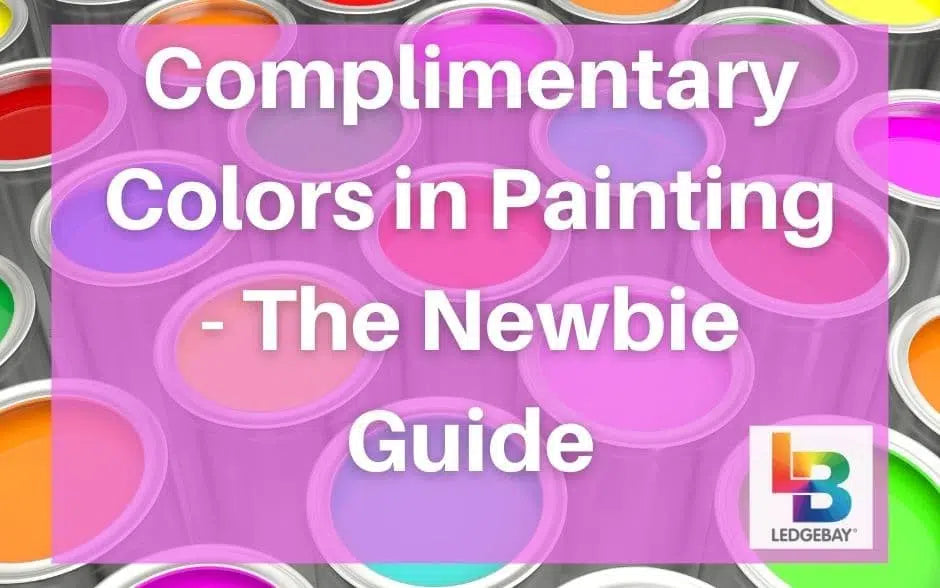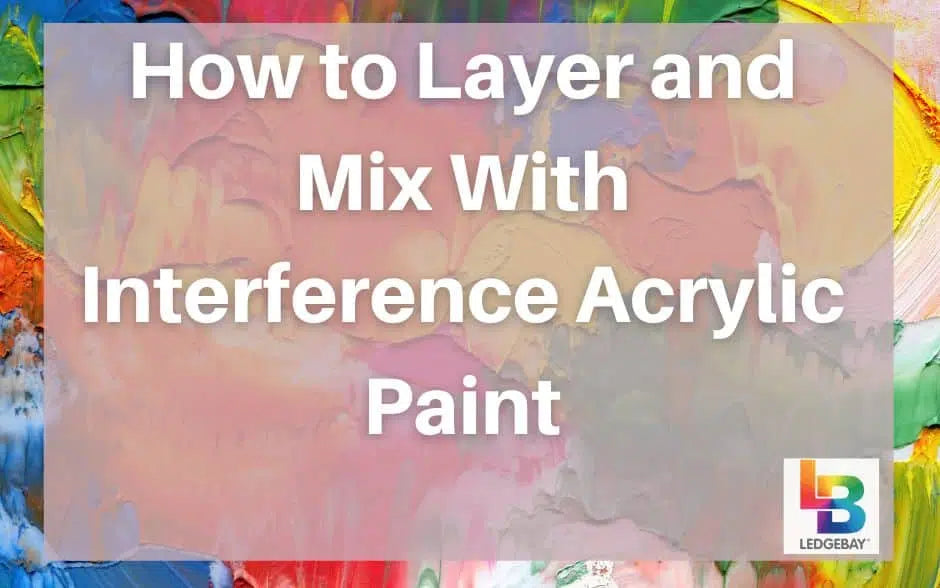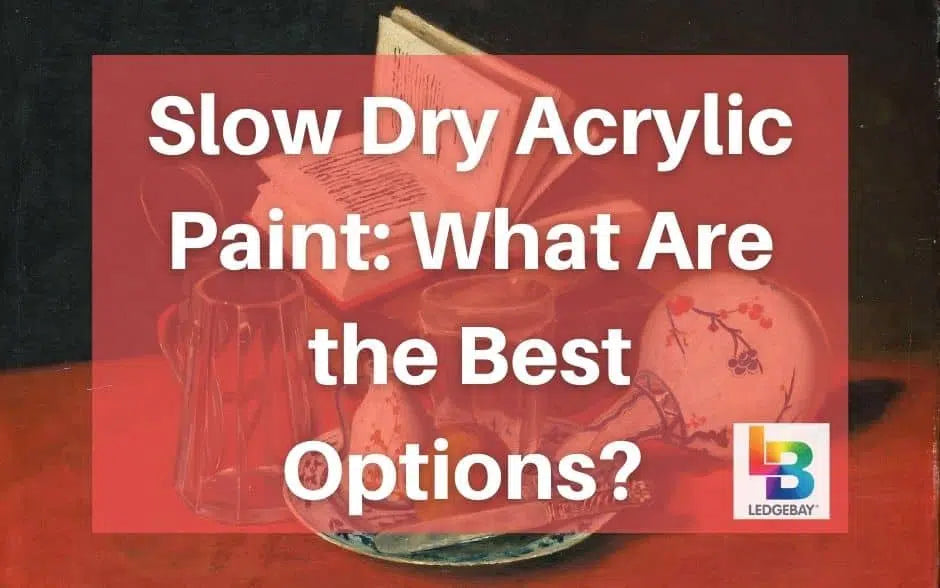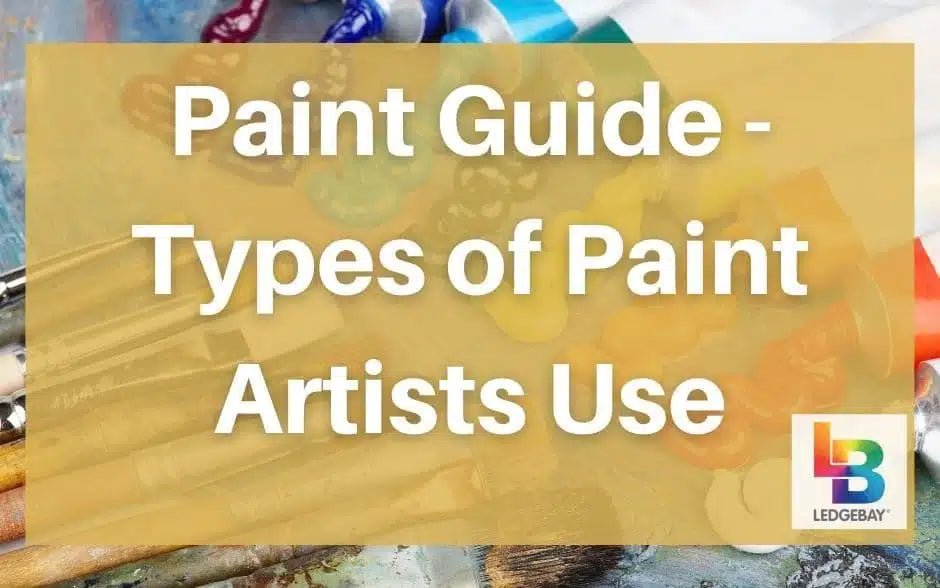There are some complimentary colors in painting, and here's what that means for you as a beginner - read on for color theory basics!
These colors are twocolors that sit opposite of each other on the color wheel, like red and green or blue and orange.
When placed side-by-side, an effect calledsimultaneous contrast is created. This effect is often used to enhance our perception of colors used in the painting.
The firstset of complimentary colors include the following primary colors:
For example, instead of using green's direct compliment, red, the split complimentaryscheme uses the two colors sitting next to it: orange and purple. The base color is often used as the main color, while the secondary are used for accents and highlights.
Other examples include:
Split complimentary colors have the same powerful visual contrast as regular complimentary colors. However, split complimentary schemes produce less tension compared to the latter and are often more neutral.
You can always use different shades of pastels or darker versions of the color you've selected, as long as you work with only the colors in your triad and their mixes.
The color wheel is a wonderful thing because it can be divided infinitely. There's practically no limit to what you can combine and create. The only problem here is this: not all colors work together.
When creating complimentary colors, there's really only one rule; no matter the color's tone or shade, its opposite color is always complimentary.
Complimentary colors are made up of one cool color and one warm color. On the other hand, split complimentary schemes are made up of two cools and one warm, and vice-versa. Triads are a combination of both.
Creating a balance of cool and warm gives the painting a brighter and more appealing look. This, again, circles to simultaneous contrast, the highest contrasts available on the color wheel as we know it.
Puttingcomplimentary colors side-by-side creates a natural illusion that helps grab a viewer's attention. For instance,paintings of sunsets are more eye-catching because it often uses deep blues and bright oranges.
Whencombining complimentary colors , keep the following in mind:
To quoteClaude Monet , primary colors seem more brilliant when they're placed in contrast with their complimentary colors. For instance, red, by itself, has no meaning in a painting. When paired with a complimentary color, however, the warmth and richness of that color increase. The color itself isn't altered; it's only our perception of it that changes.
In other words, compliments make each other ‘pop’. This is why they are often used on clothes and home decor.
Two of Vincent van Gogh's most famous paintings,Café Terrace on the Place du Forum andThe Night Café , use complimentary colors to increase the visual effect of contrast.
On Café Terrace on the Place du Forum,Van Gogh used a bold combination of blue and orange to accentuate the saturation and add a certain visual depth. When directly next to each other, blue and orange create a balance of cool and warmth, allowing each aspect of thepainting to pop .
The same happens with The Night Café. The use of red and green isn't subtle in the least, which is perhaps why it stands out so much.
In the words ofVan Gogh himself, "Everywhere there is a clash and contrast of the most disparate reds and greens." Blood red and green colored the walls of the café. In the middle of the room, a green billiard sits idly. The four citron-yellow lamps glow orange and green.
The Night Café is often dubbed asVan Gogh's "Ugliest" Masterpiece . In fact, Van Gogh himself admitted that it's one of the ugliest he's done.
YouTuber Nerdwriter1 made an analysis of the piece, in which he described The Night Café as apainting of anxiety .
Complimentary colors, when used properly, give a painter the chance to add emotion to his work. In the examples above, we see a great contrast withVan Gogh’s two paintings: Café Terrace is bright and full of life, while The Night Café is oppressive and lonely. Remember: color is all relative. The value of color depends on the aspects that surround it. For this reason, it's important to think of how adjacentcolors affect one another when choosing a palette.
Remember: color is all relative. The value of color depends on the aspects that surround it. For this reason, it's important to think of how adjacentcolors affect one another when choosing a palette.
Test the colors on a separate sheet of paper before your canvas. You can also use color cards or color charts to see how your chosen colors compliment each other when placed side-by-side. Experimentation is key, always!
Don't be afraid to test different hues, tints, tones, and shades of complimentarycolors in painting . This allows you to find the best combination and deliver the message and emotion you want your viewers to feel.
Complimentarycolors in painting is exciting and rewarding. Apart from drawing the viewer's eyes, they allow you to enhance a scenery or an object.
Knowing how to use complimentary colors is one of the most important aspects of color theory. As such, it will help yourpainting appear more interesting . Good luck!
CLICK HERE to shop all of our acrylic paint by numbers kits!
What Are Complimentary Colors?
[amazon box="1631599208"]These colors are twocolors that sit opposite of each other on the color wheel, like red and green or blue and orange.
When placed side-by-side, an effect calledsimultaneous contrast is created. This effect is often used to enhance our perception of colors used in the painting.
The firstset of complimentary colors include the following primary colors:
- Orange and blue
- Red and green
- Yellow and purple
- Yellow-orange and blue purple
- Blue-green and red-orange
- Yellow-green and red-purple
What Are Split Complimentary Colors?
Split complimentary colors use just about the same technique. However, instead of two colors, it uses three: one primary color and two secondary.For example, instead of using green's direct compliment, red, the split complimentaryscheme uses the two colors sitting next to it: orange and purple. The base color is often used as the main color, while the secondary are used for accents and highlights.
Other examples include:
- Red, blue-green, and yellow-green
- Yellow, blue-purple, and red-purple
- Purple, yellow-orange, and yellow-green
- Blue, red-orange, and yellow-orange
Split complimentary colors have the same powerful visual contrast as regular complimentary colors. However, split complimentary schemes produce less tension compared to the latter and are often more neutral.
What Are Triad Complimentary Colors?
In its most basic sense, triad complimentary colors are a three-color combination of every fourth color of the basic color wheel. The basic color wheel has a total of 12 colors, which includes three primary colors, three secondary colors, and six tertiary colors. With this in mind, examples of triad colors include:- Red, yellow, blue
- Violet, orange, green
- Blue-violet, yellow-green, red-orange
- Yellow-orange, blue-green, red-violet
You can always use different shades of pastels or darker versions of the color you've selected, as long as you work with only the colors in your triad and their mixes.
How to Choose and Mix Complimentary Colors
[amazon box="B09CH5J2PT"]The color wheel is a wonderful thing because it can be divided infinitely. There's practically no limit to what you can combine and create. The only problem here is this: not all colors work together.
When creating complimentary colors, there's really only one rule; no matter the color's tone or shade, its opposite color is always complimentary.
Complimentary colors are made up of one cool color and one warm color. On the other hand, split complimentary schemes are made up of two cools and one warm, and vice-versa. Triads are a combination of both.
Balancing Warm and Cool Colors
[amazon box="1096247968"]Creating a balance of cool and warm gives the painting a brighter and more appealing look. This, again, circles to simultaneous contrast, the highest contrasts available on the color wheel as we know it.
Puttingcomplimentary colors side-by-side creates a natural illusion that helps grab a viewer's attention. For instance,paintings of sunsets are more eye-catching because it often uses deep blues and bright oranges.
Whencombining complimentary colors , keep the following in mind:
- If a dark color is placed next to a light color, both colors look brighter
- When a dark color is placed next to a bright color, the bright color turns brighter, and the dark color turns darker
- When two colors of similar brightness are placed next to each other, the brightness diminishes
- Warm colors look warmer when placed alongside cool colors
- Cool colors look cooler when placed alongside warm colors
- Muted colors look duller when placed next to a bright color
To quoteClaude Monet , primary colors seem more brilliant when they're placed in contrast with their complimentary colors. For instance, red, by itself, has no meaning in a painting. When paired with a complimentary color, however, the warmth and richness of that color increase. The color itself isn't altered; it's only our perception of it that changes.
In other words, compliments make each other ‘pop’. This is why they are often used on clothes and home decor.
Complimentary Colors in Action: Van Gogh’s Café Terrace and The Night Café
[amazon box="B07NLR4TZC"]Two of Vincent van Gogh's most famous paintings,Café Terrace on the Place du Forum andThe Night Café , use complimentary colors to increase the visual effect of contrast.
On Café Terrace on the Place du Forum,Van Gogh used a bold combination of blue and orange to accentuate the saturation and add a certain visual depth. When directly next to each other, blue and orange create a balance of cool and warmth, allowing each aspect of thepainting to pop .
The same happens with The Night Café. The use of red and green isn't subtle in the least, which is perhaps why it stands out so much.
In the words ofVan Gogh himself, "Everywhere there is a clash and contrast of the most disparate reds and greens." Blood red and green colored the walls of the café. In the middle of the room, a green billiard sits idly. The four citron-yellow lamps glow orange and green.
The Night Café is often dubbed asVan Gogh's "Ugliest" Masterpiece . In fact, Van Gogh himself admitted that it's one of the ugliest he's done.
YouTuber Nerdwriter1 made an analysis of the piece, in which he described The Night Café as apainting of anxiety .
Complimentary colors, when used properly, give a painter the chance to add emotion to his work. In the examples above, we see a great contrast withVan Gogh’s two paintings: Café Terrace is bright and full of life, while The Night Café is oppressive and lonely.
Colors Can Be Tricky
 Remember: color is all relative. The value of color depends on the aspects that surround it. For this reason, it's important to think of how adjacentcolors affect one another when choosing a palette.
Remember: color is all relative. The value of color depends on the aspects that surround it. For this reason, it's important to think of how adjacentcolors affect one another when choosing a palette.Test the colors on a separate sheet of paper before your canvas. You can also use color cards or color charts to see how your chosen colors compliment each other when placed side-by-side. Experimentation is key, always!
Don't be afraid to test different hues, tints, tones, and shades of complimentarycolors in painting . This allows you to find the best combination and deliver the message and emotion you want your viewers to feel.
Final Thoughts
[amazon box="B07RFHG7D1"]Complimentarycolors in painting is exciting and rewarding. Apart from drawing the viewer's eyes, they allow you to enhance a scenery or an object.
Knowing how to use complimentary colors is one of the most important aspects of color theory. As such, it will help yourpainting appear more interesting . Good luck!
CLICK HERE to shop all of our acrylic paint by numbers kits!











